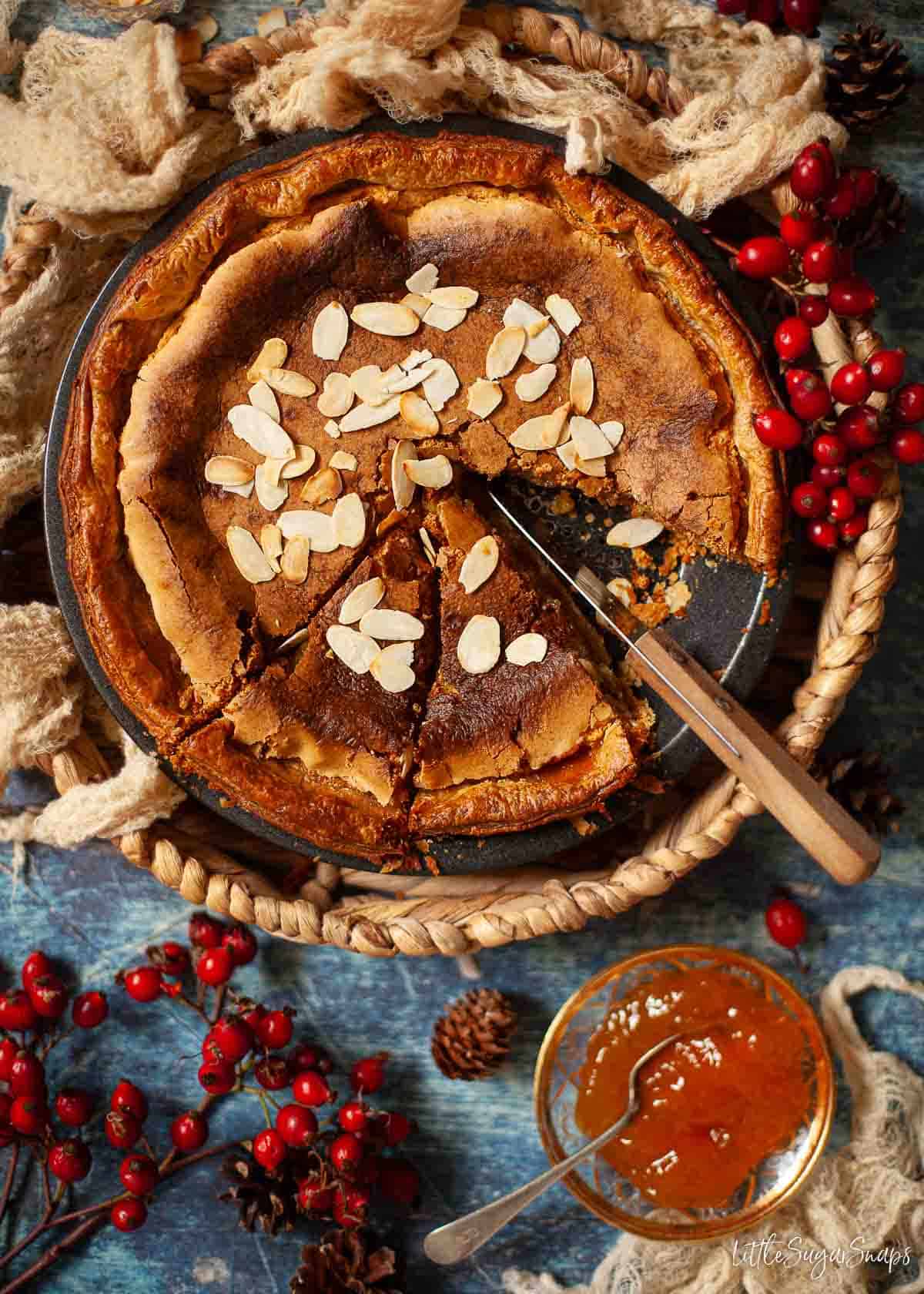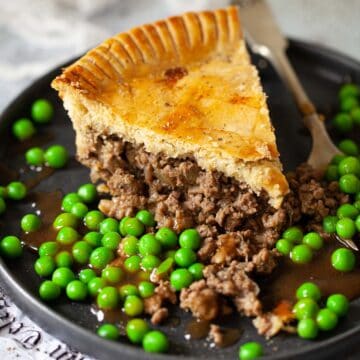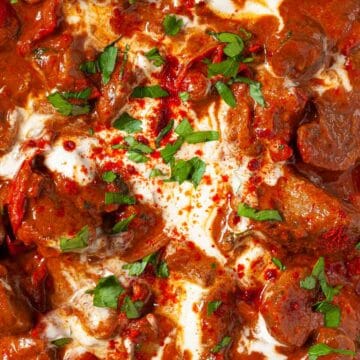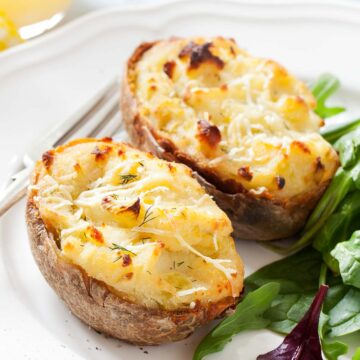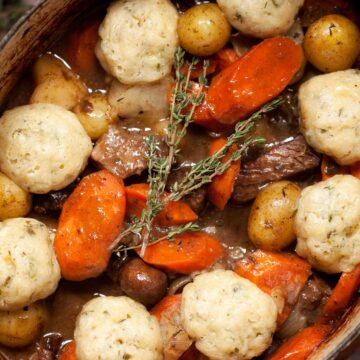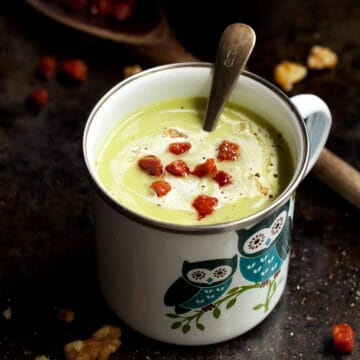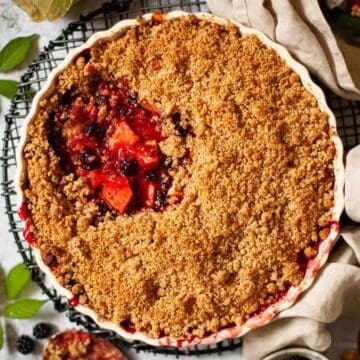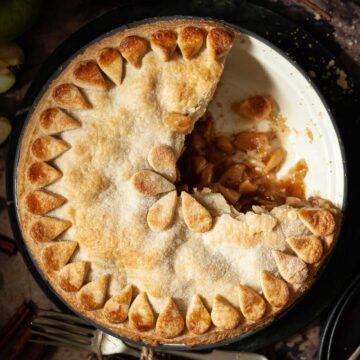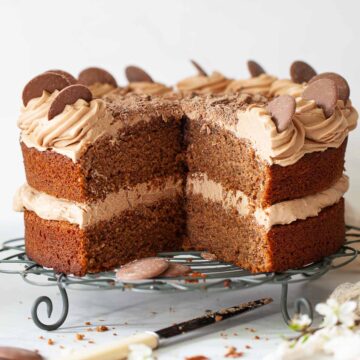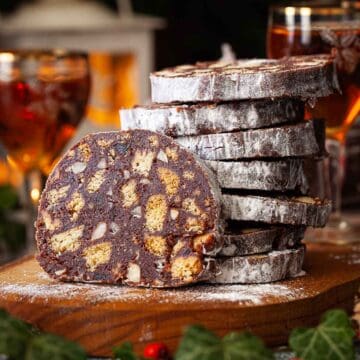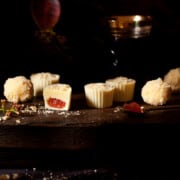I’m on a homesick mission to re-discover some of the specialities the Midlands food world has blessed us with. I have a soft spot for the Midlands. I was born and raised in the middle of Nottinghamshire in the East Midlands. Back then I went by the name Jane Coupland. Here’s the back story…

Jump to:
Nottinghamshire, specifically the city of Nottingham, agreed with me. At age eleven I started attending secondary school in this city and it was a revelation. I’d been a ridiculously quiet, shy and timid child up until this point. But entering Nottingham life seemed to awaken certain stronger characteristics in me. As I matured I discovered I also possessed determination and independence. And, when combined with the right circumstances or people, these attributes would shine a little stronger. When adult life took hold, Nottingham did present many stimulating opportunities and plenty of lovely & inspirational people to me. In summary, I was more than happy in my home town. I was young, free-spirited and life was exciting.
Then, in 1998, aged 24, I left the Midlands, rolling myself right down to Devon to complete a Masters degree. I didn’t return. It wasn’t an intentional decision – more a twist of fate (or lack of sensible thought process) that I’ve come to question as the years float by.
I now live in the South East and I’m forever being labelled as northern – because I speak with short vowels. But I’m not northern. In fact, I object to that label quite passionately (absolutely no offence to true Northerners intended – I think you’re lovely). But I am a Midlander.
Suffice to say, I’ve always been proud of my middle of the country roots. We Midlanders are breeds of our own with many wonderful accent variations and quirky turns of phrase held within each county border to proudly distinguish our fellow Midland inhabitants from each other (we relish our individuality).
And we also have quite a few culinary gems nestled within each locality too. In fact, both the East and West Midlands regions have gifted us plenty of delicious goodies.
It’s these Midlands food specialities that I would like to shine a spotlight on whilst I wallow in sentimental pangs for my long-lost home. Call this recipe collection me paying homage to my roots.
Watch this page as the collection of Midlands recipes grows… Still to get a mention are the counties of Herefordshire and Rutland. Just give me time, although if you have any suggestions for these two counties I’d love to hear from you!
Defining the East and West Midlands
Just for reference, for the purpose of this collection of Midlands food:
The East Midlands region comprises Derbyshire, Leicestershire, Lincolnshire, Northamptonshire, Nottinghamshire and Rutland.
The West Midlands region comprises Herefordshire, Shropshire, Staffordshire, Warwickshire, West Midlands and Worcestershire. Nope, that’s not a typo. West Midlands refers to both the region and the area that covers the metropolitan districts of Birmingham, Coventry, Dudley, Sandwell, Solihull, Walsall and Wolverhampton.
My former economist self knows that regional boundaries are often modified over time so if you spot a change or just disagree with my geographical categorisations go easy on me, please.
Now the regional boundaries are clear, let’s get to some recipes for scrumptious Midlands food.
East Midlands Food
Mushy Peas (Nottinghamshire, Derbyshire & Leicestershire)
Kicking off the East Midlands food section are mushy peas. I have a soft spot for a pea mix. In fact, it’s the only thing I’ll ever order from the chippy. In case you don’t know what a pea mix is it’s steaming hot mushy peas ladled straight over freshly fried chips. It’s simple. It’s cheap. It’s bliss. And it’s on the menu board in chip shops throughout Nottinghamshire, Derbyshire and Leicestershire.
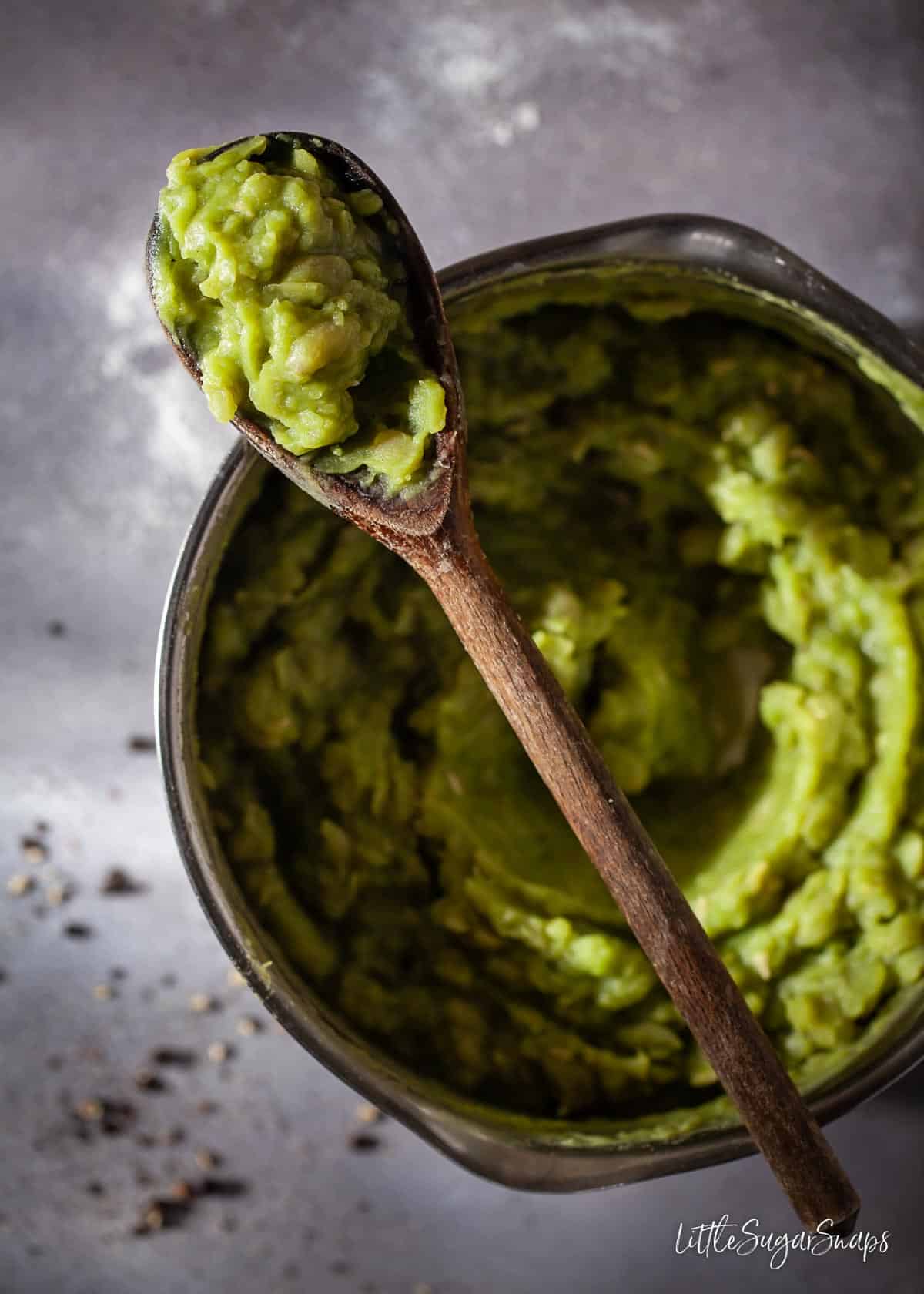
But try ordering it elsewhere in the country. You’ll get a blank look. Even once you’ve explained what you’re after the server most likely won’t oblige.
Instead, you’ll end up with a pot of mushy peas and a portion of chips wrapped separately.
It’s not the same… not the same at all. You can call me mardy if you like. (Mardy is a fantastic Midlands word meaning petulant.)
Nottinghamshire Pie
This one is a relatively new classic. Sadly for me, Nottinghamshire pie wasn’t created until 10 years after I departed the Midlands, so it wasn’t something I’d heard of, let alone tasted until very recently. But discover it I did. And recreate it at home I certainly did – eagerly. I was immediately won over. It’s hearty and delicious. If you think this pie is going to be anything like a typical cottage pie, think again.
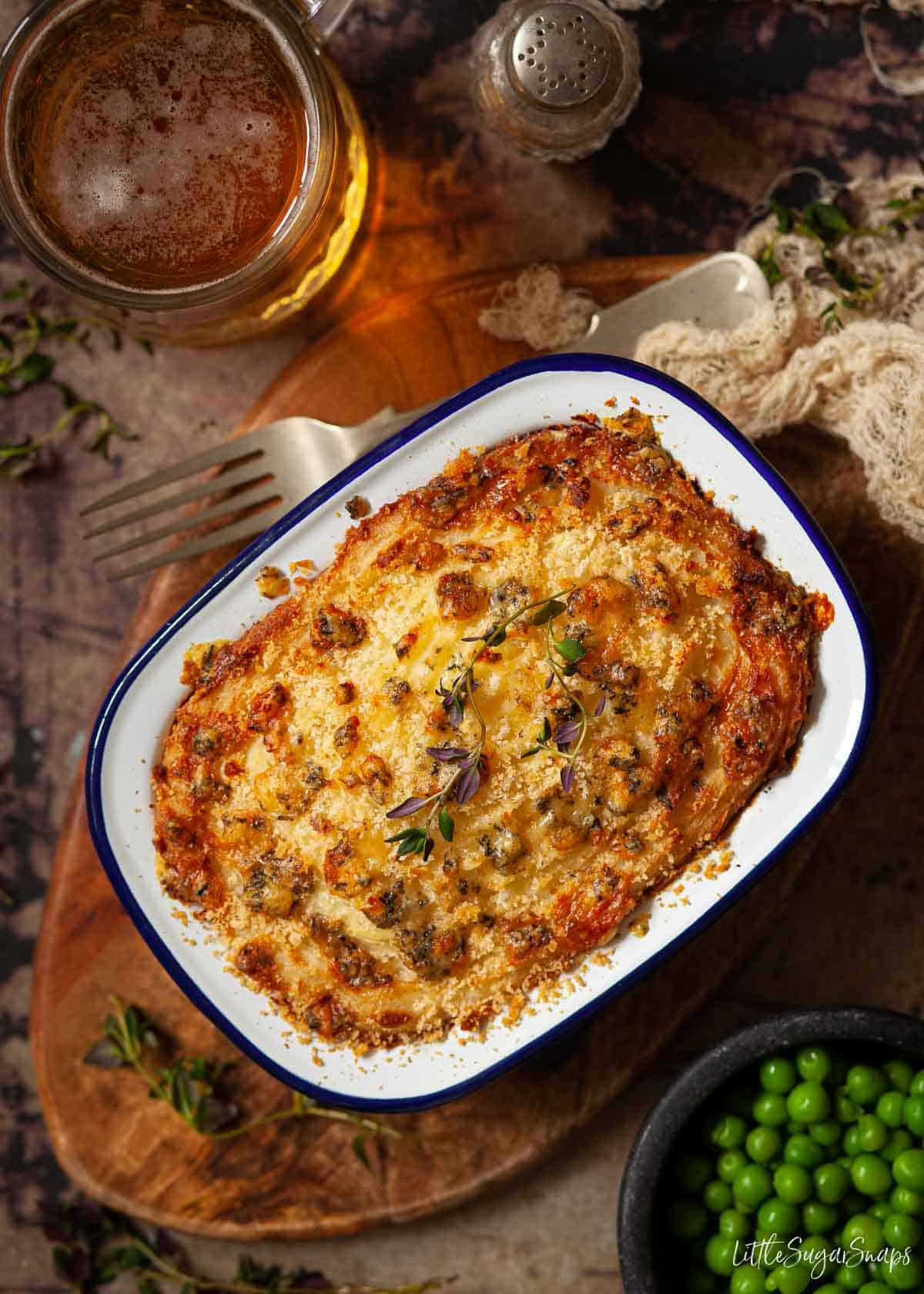
Nottinghamshire pie was conceived in 2008 by Roy Woods, a local chef working in a pub in the small rural village of Halam. It encompasses a number of ingredients that have been commonly grown or produced in Nottinghamshire for centuries – potatoes, leeks and Blue Stilton cheese. These ingredients are tied in with chunks of braising steak and a touch of mustard to create a truly unique potato-topped pie.
Utter bliss.
Call me biased – I grew up just six miles north of Halam – but in my view, this pie is out of this world and a real tribute to my birth county. Thank you Roy Woods for this culinary masterpiece.
Buxton Pudding (Derbyshire)
Buxton pudding is a fine example of pure, honest, humble and frugal sweet comfort food. It’s made using pantry staples that don’t cost the earth these days. And with that fruity jam centre, it’s bound to put a smile on the face of dessert lovers young and old.

Buxton pudding is a lovely Midlands food creation emanating from the spa town of Buxton in the Peak District, Derbyshire. It’s been knocking around since Victorian times under various guises but these days it typically includes a pastry shell filled with plenty of sticky jam and a sponge topping that is bolstered by the inclusion of breadcrumbs.
Expect plenty of contrasting textures. There’s the crispness of the pastry and the crust of the sponge filling. But bust through that crust to revel in the gloriously soft centre and the sticky jam.
Lincolnshire Plum Bread
This recipe has been a long time coming. It’s a bake close to my heart because the paternal side of my family come from this county. As a child, visits to a small village in Lincolnshire to visit my grandparents were frequent. As such, I poured my heart and soul into developing this particular recipe.
Lincolnshire plum loaf, contrary to the name, does not contain plums. In this instance, the use of the word plum refers to the dried fruits abundant in this enriched bread. It’s old-English terminology.
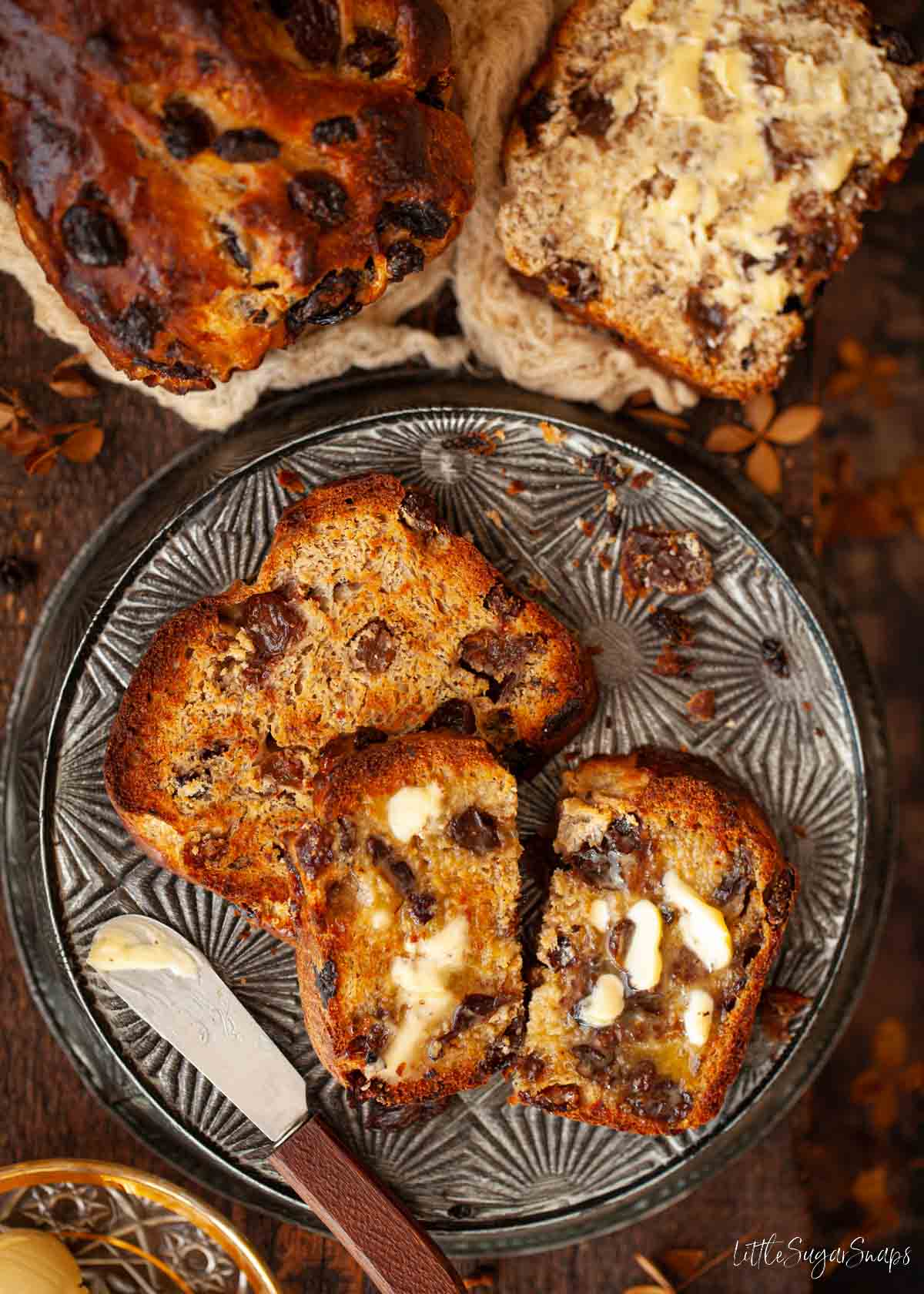
Expect to find a juicy medley of sultanas, raisins and currants in this loaf. Eat it just as it is or toasted, but do smother your slice with butter. A little cheese (cheddar or Lincolnshire Poacher) is also a good option. As is a good cup of tea…
Northamptonshire Pudding
Northamptonshire pudding is a somewhat understated affair. Essentially, it’s a steamed sponge pudding with raspberry jam stirred into the sponge batter before cooking. That’s it. There’s no jam on the top in the classic version.
This dessert has been knocking around since at least the 1930s but it’s not particularly well-known as far as Midlands food recipes go.
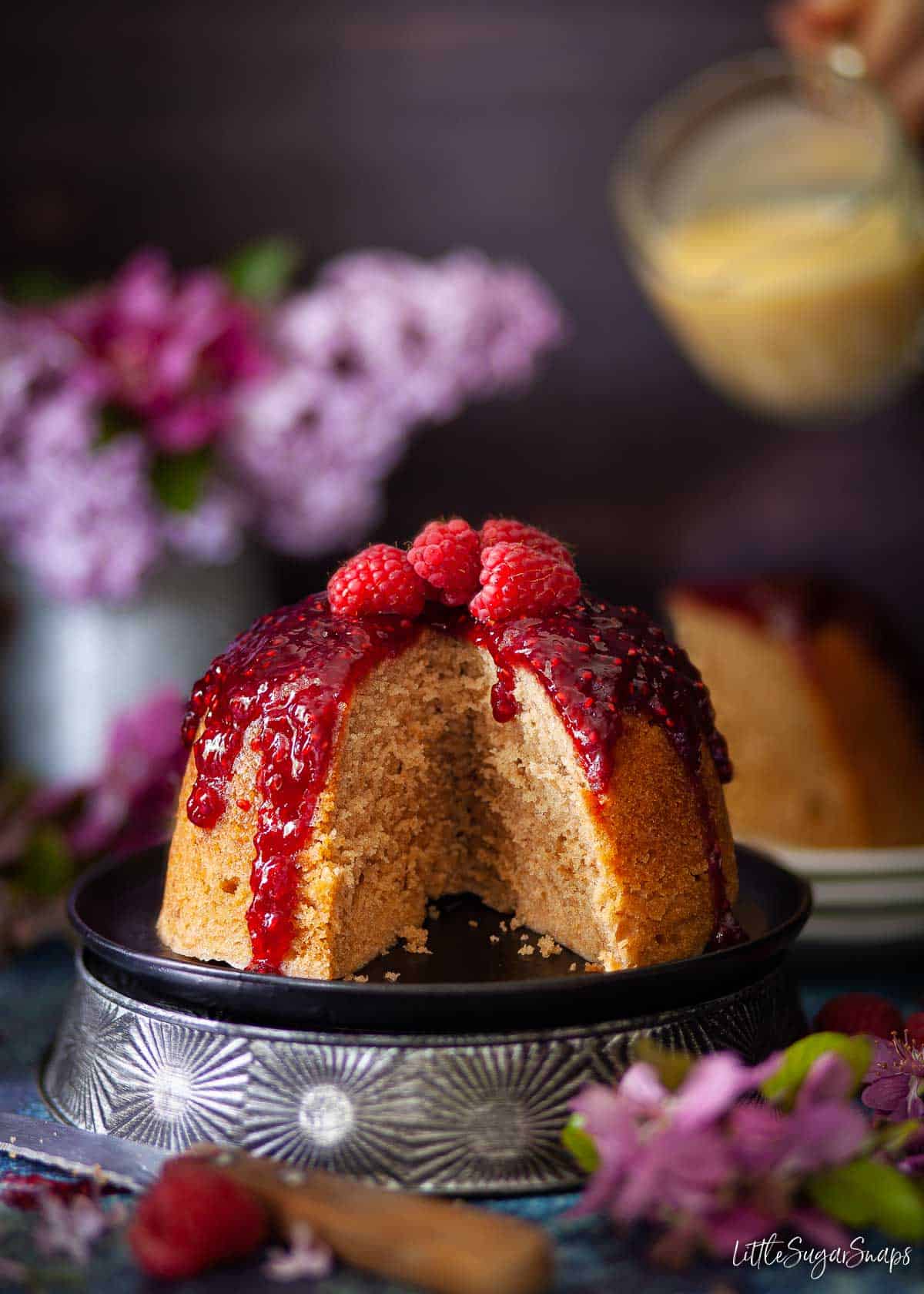
The inclusion of jam in the batter transforms the colour of this humble steamed pudding and provides a subtle hint of raspberry fruit flavour.
Arguably, this dessert could prove to be a little too understated for modern tastes – it does seem remiss not to include a hefty dollop of jam on the top of the pudding too. Perhaps that’s why it’s not in favour right now…
Purists can stick with tradition and leave the extra jam off the top if they want (then weep over their mistake).
Belvoir Castle Buns (Leicestershire)
Belvoir Castle (pronounced beaver) is the ancestral home of the Duke of Rutland and has been for generations. I’ll own up to assuming that the castle must, therefore, be located in Rutland. In fact, I was very excited to think that I’d discovered a recipe from this area. But alas, I was mistaken. Belvoir Castle is actually in Leicestershire.
Geographical facts aside, these old-fashioned currant buns, bearing the name of this picturesque landmark, are a charming teatime treat to tuck into. They were a particular favourite of the 7th Duke of Rutland in the 1800s.
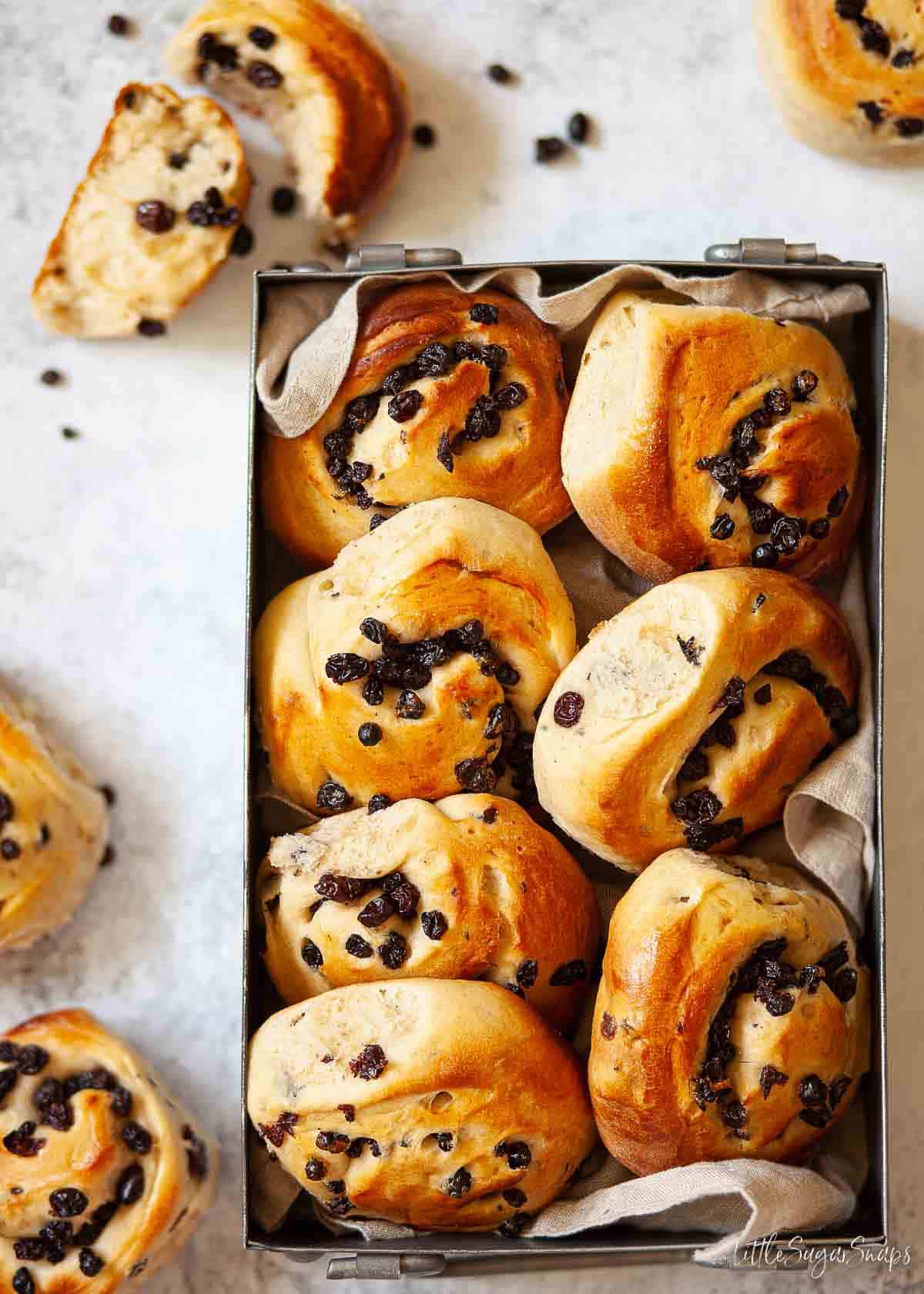
Expect to bite into soft and fluffy sweetened bread rolls brimming with juicy currants. Unlike typical currant buns, Belvoir Castle buns are rolled up, creating a pretty swirl of plump fruit within each one.
Traditionally, they are served unglazed – just as they are pictured above. But a drizzle of glace icing doesn’t hurt at all. Serve them alongside a cup of tea for a mid-morning or mid-afternoon snack. Get those dainty teacups and saucers out and pretend you’re the Duke himself.
Derbyshire Thor Cake
This cake, eaten on Bonfire Night, is the East Midland’s answer to parkin. It’s brimming with flavour and texture and there’s nothing subtle about this cake. Expect rich and robust black treacle, warming ginger and fruity candied peel alongside a deliciously chewy, slightly sticky consistency.
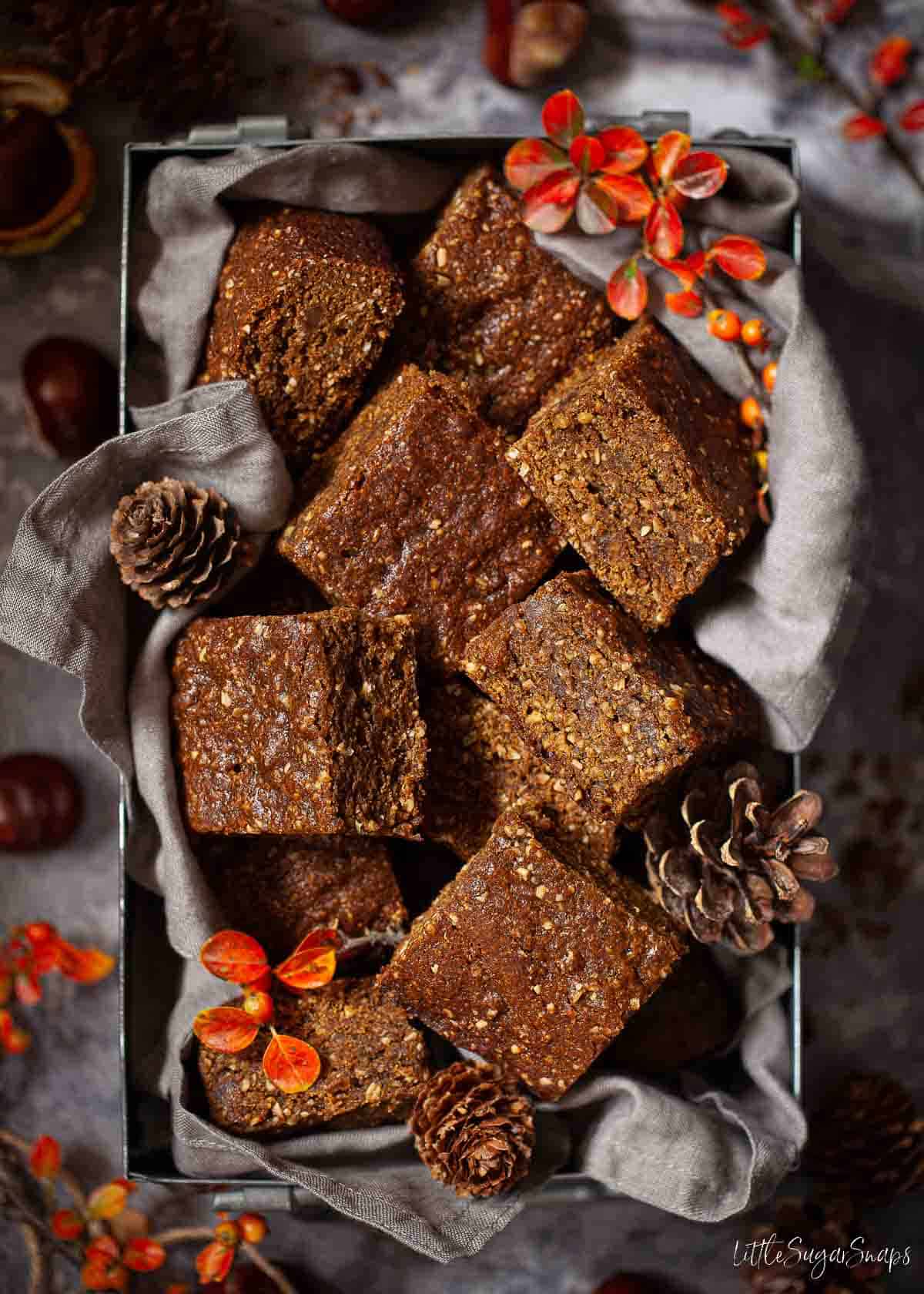
Thor cake is also known as Thar cake or Tharf cake. It originated in Pagan times, featuring as the celebration cake of choice to welcome the first day of winter. Revellers would feast on it as they warmed themselves around bonfires. However, the early Anglo-Saxon versions of this cake would have been much less extravagant affairs, lacking in butter, eggs and black treacle.
If you’re a die-hard black treacle lover then this is the cake for you on November 5th. It does have similarities to Yorkshire parkin, but it’s not quite the same thing. I urge you to try it and be delighted.
Mansfield Pudding (Nottinghamshire)
Mansfield pudding might just take the prize for being the most obscure recipe included in this collection of Midlands food. There’s very little information available about the origins of this baked suet pudding but it’s been in existence since at least 1861 when it was featured in Mrs. Beeton’s Book of Household Management.
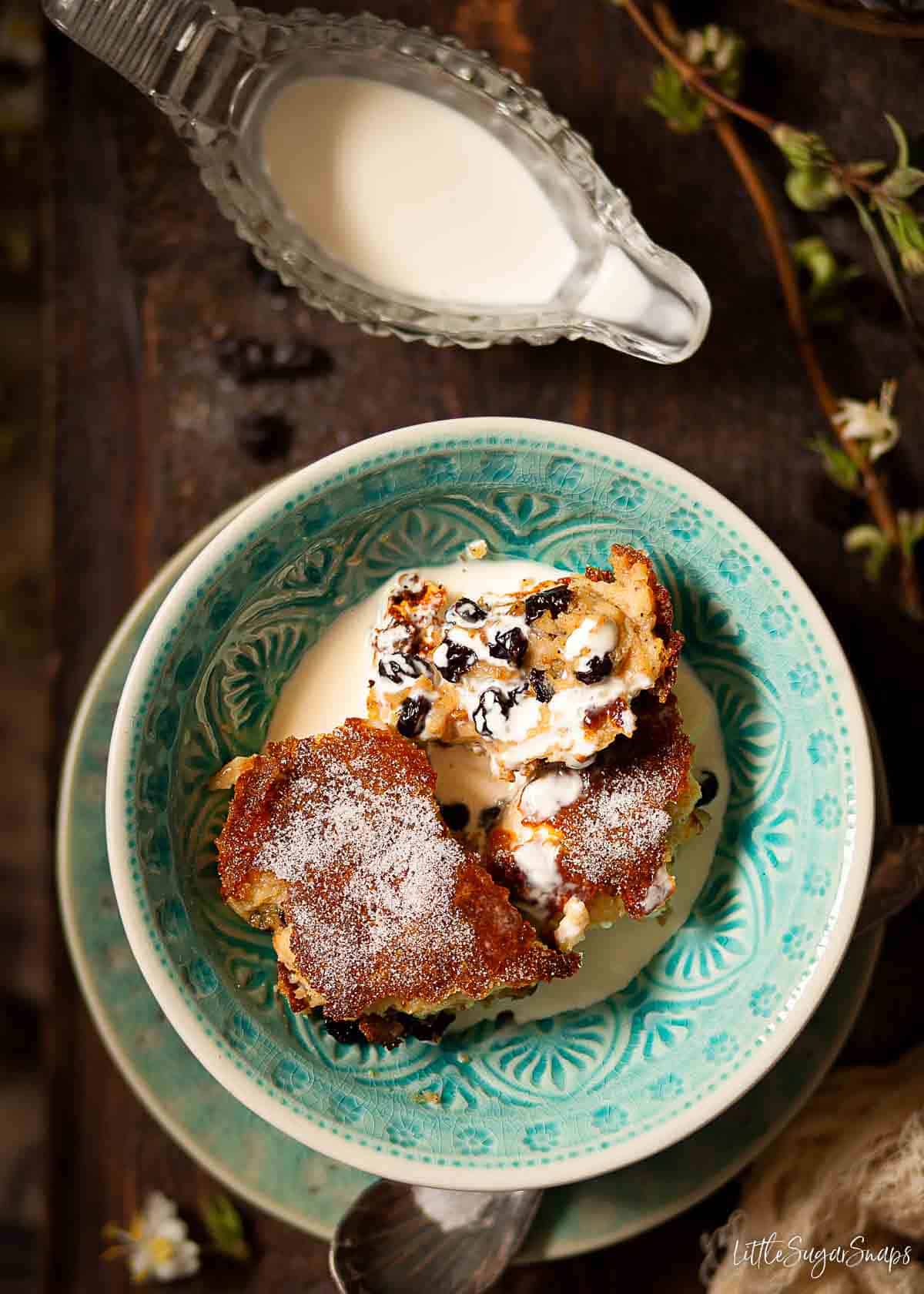
What can you expect from Mansfield pudding? Well, this sweet baked suet pudding is studded with juicy currants and laced with brandy. It’s rather like a cross between a set egg custard dessert and bread & butter pudding. As far as suet puddings go, this one is not particularly heavy as it’s relatively light on both breadcrumbs and flour.
It’s best served warm with a good slurp of single cream.
Bakewell Pudding (Derbyshire)
Bakewell pudding is a strong contender for the prize of ugliest pudding going. However, let me assure you that despite appearances, this is a seriously tasty treat to find yourself tucking into.
Bakewell pudding should always include puff pastry, jam and a rich & buttery egg custard topping flavoured with almonds. However, there are plenty of additional goodies that cooks over the years have chosen to include in their recipes, including candied peel, baking spices, rosewater and even lemon brandy.
This dessert should not be confused with the Bakewell tart, which locals shudder at the thought of.
Melton Hunt Cake (Leicestershire)
Melton Hunt cake was first created in 1854 in the town of Melton Mowbray, Leicestershire, by John Dickinson, a local shop keeper who invented the pork pie a few years earlier. Hunt cake was made to be handed out to members of the local hunt, along with a glass of sherry, before they set off on their horses.
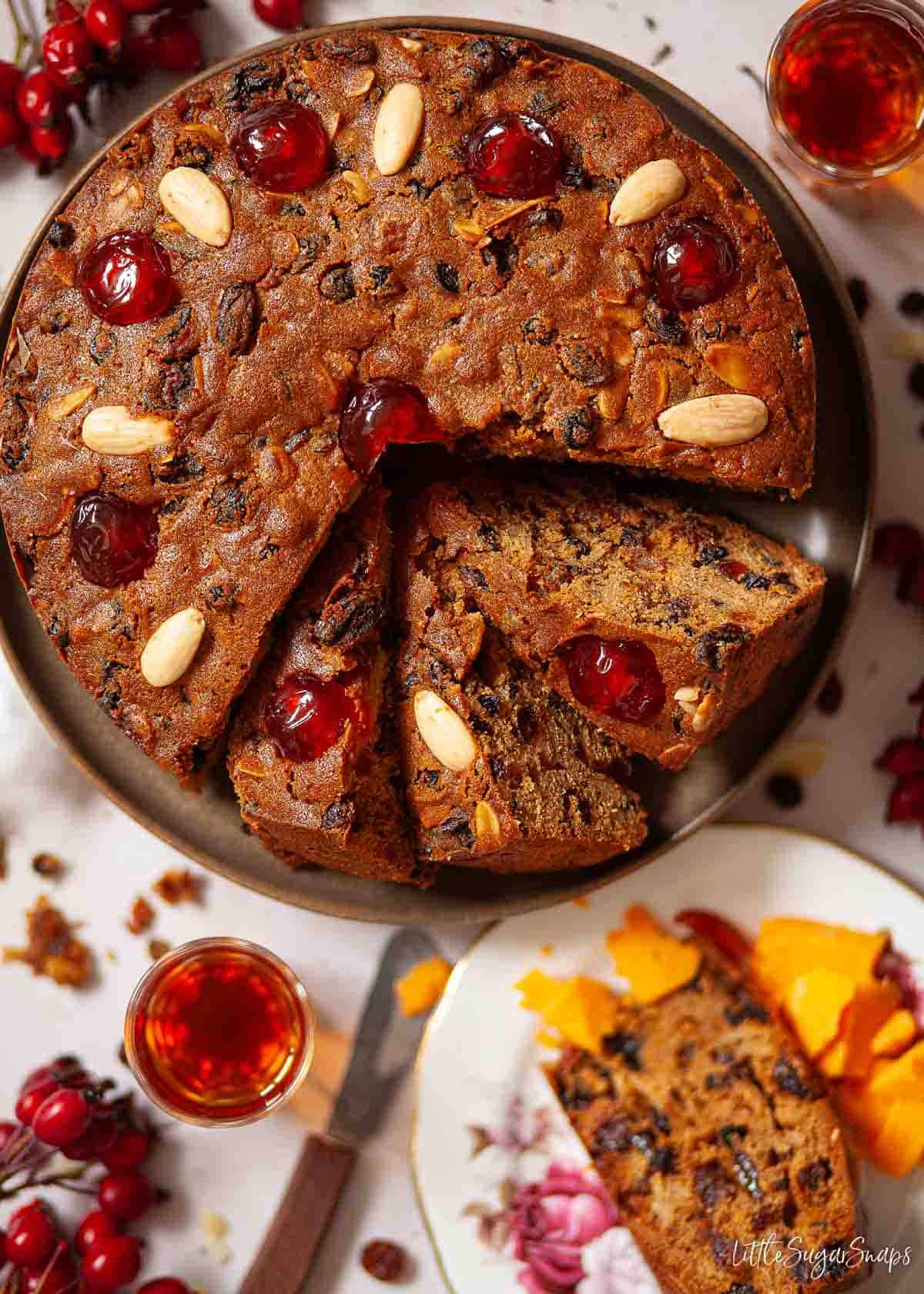
This cake is a wonderful mix of sultanas, currants, glacé cherries, almonds and rum. Whole cherries and almonds are used to garnish the top, giving it quite an eye-catching appearance. It’s a divine fruit cake to enjoy. Try it with a side of Red Leicester or cheddar cheese.
This cake should not be confused with Scottish Dundee cake, which contains no alcohol and no cherries but does incorporate marmalade.
West Midlands Food
A lovely gentleman from Wolverhampton recently queried if I had plans to include tripe or faggots in my list of food from the West Midlands. He’s quite right, no list would be complete without them. The only problem is, I’m very basic when it comes to meat and I just can’t go down these routes. I’m sorry.
If you are wondering what tripe is take a look here. And if you’d like a recipe for faggots, try this one.
Brummie bacon cakes (West Midlands)
It will come as no surprise to most people to hear that Brummie bacon cakes originate from Birmingham in the West Midlands. Our second city should be proud of this food offering, although rumour has it that many modern-day locals wouldn’t recognise one of these if it landed on their plate. I hope that’s a false rumour as these savoury treats are delectable and should not be missed out on.
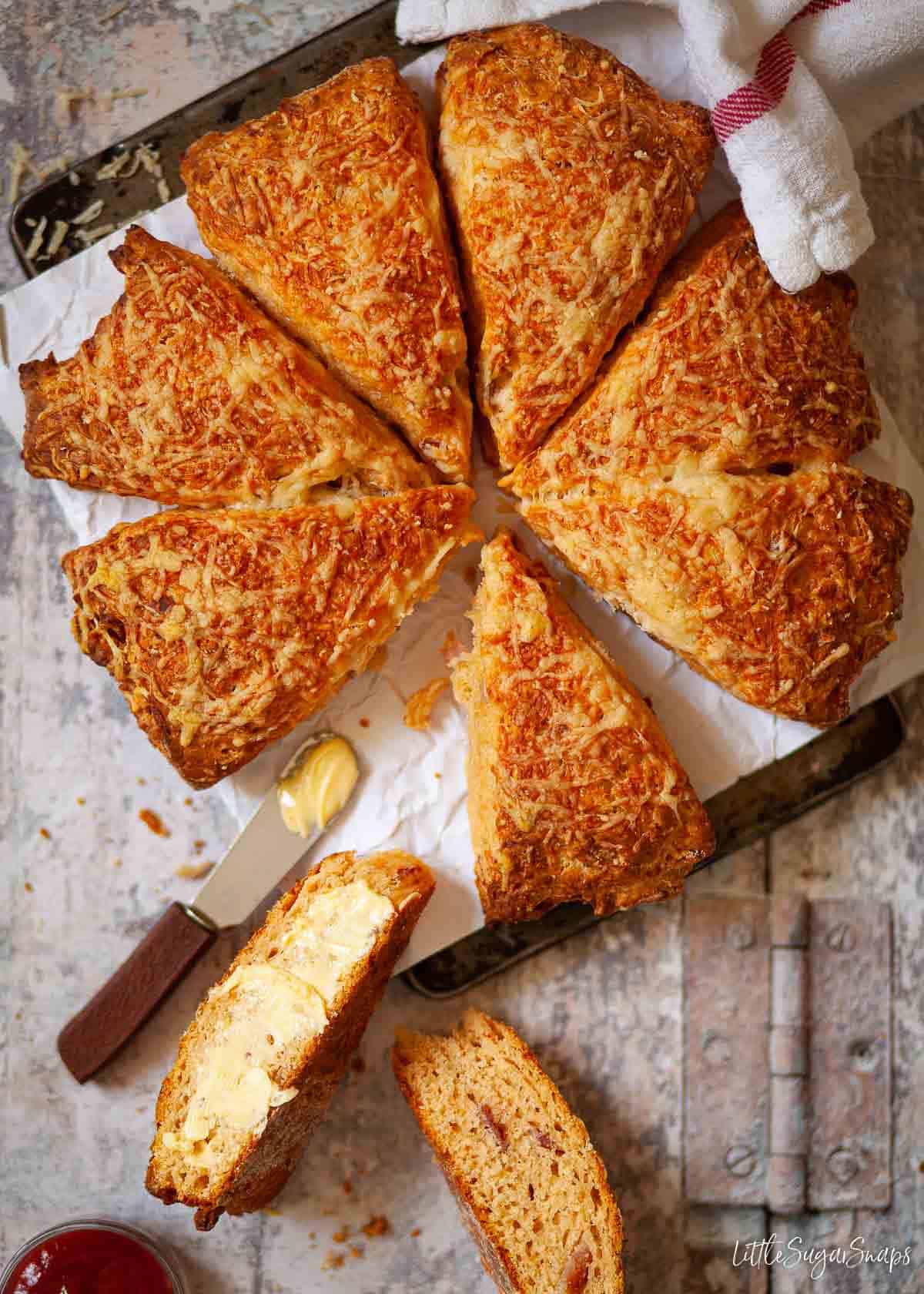
They also go by the name of Brummie breakfast cakes and bacon breakfast cakes. I have to agree, they do go incredibly well with a classic English fry-up.
They are also great for just snacking on or as an alternative to bread alongside soups and main course meals too.
And for anybody outside of the UK wondering what the word Brummie means, it’s a term used to describe both the people originating from Birmingham and also their distinctive dialect.
North Staffordshire Oatcakes
Staffordshire oatcakes originate from the Stoke-on-Trent area, also known as the Potteries. They were invented several centuries ago and represent a capitalisation on the ease of growing oats in the local area compared to wheat.
Hole in the wall style takeaway establishments sold oatcakes until very recently and locals are extremely proud of this contribution to the West Midlands food world. It was common to pick one up at the end of a night out or early in the morning for breakfast. Those sound like great days.
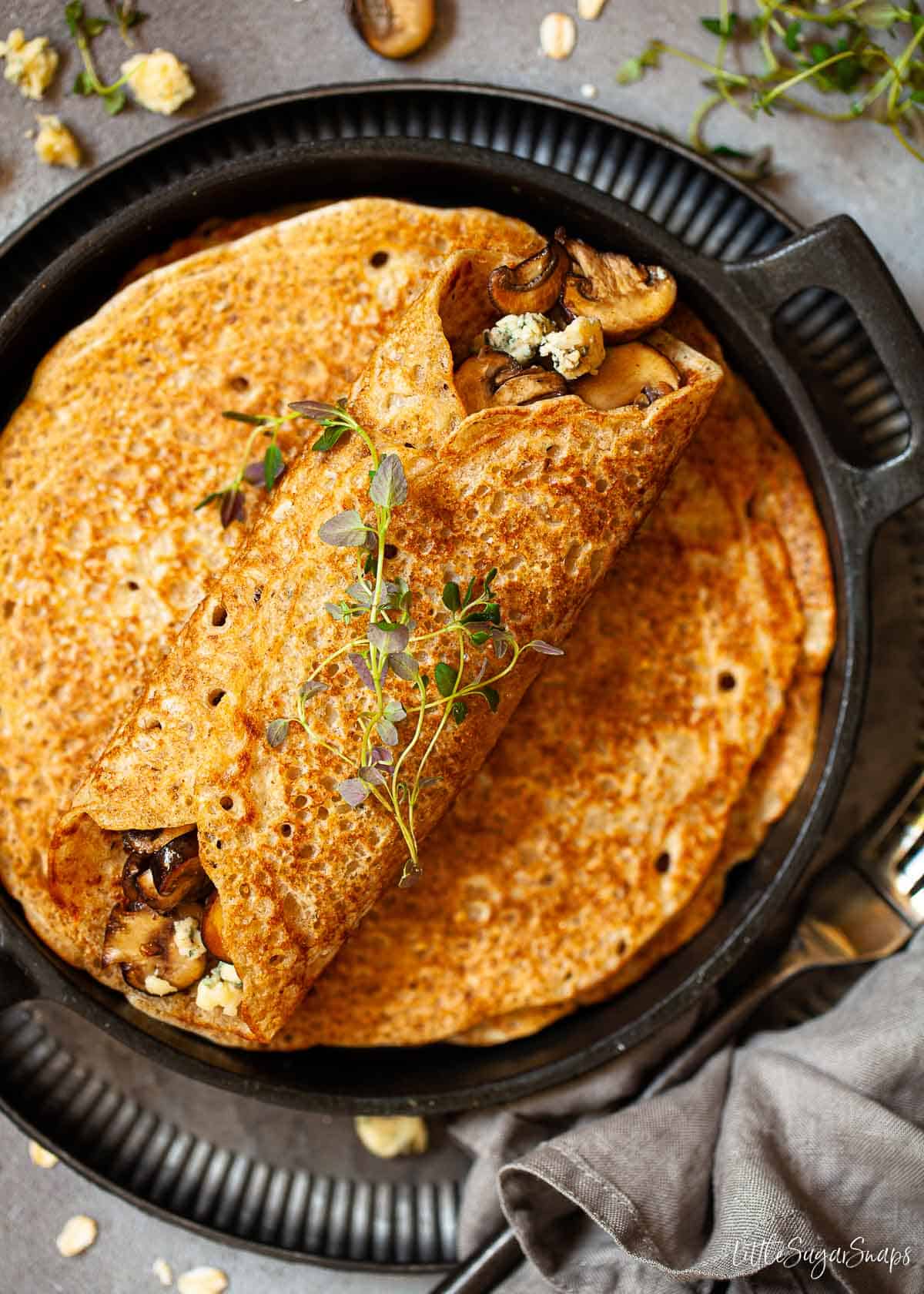
These oatcakes are vaguely akin to pancakes but, as they are made from oatmeal and yeast, there are marked differences. These fried delights are extremely filling and highly suited to stuffing with savoury goodies.
Locals swear by serving them alongside a fry-up at breakfast or they eat them smothered with melted cheese and bacon. Who could sensibly argue with that?
Shrewsbury Biscuits (Shropshire)
Shrewsbury biscuits come from, you’ve guessed it, the ancient town of Shrewsbury in Shropshire. They have been knocking around since the 1500s, so can be classified as a British bake that has well and truly stood the test of time.
Locals (Salopians) don’t necessarily rate these thin shortbread style biscuits – possibly the result of being inundated with expensive mass-produced versions aimed at tourists. But the Shrewsbury biscuit remains popular throughout the rest of Britain and beyond (there’s quite a cult following for an eggless version in India).
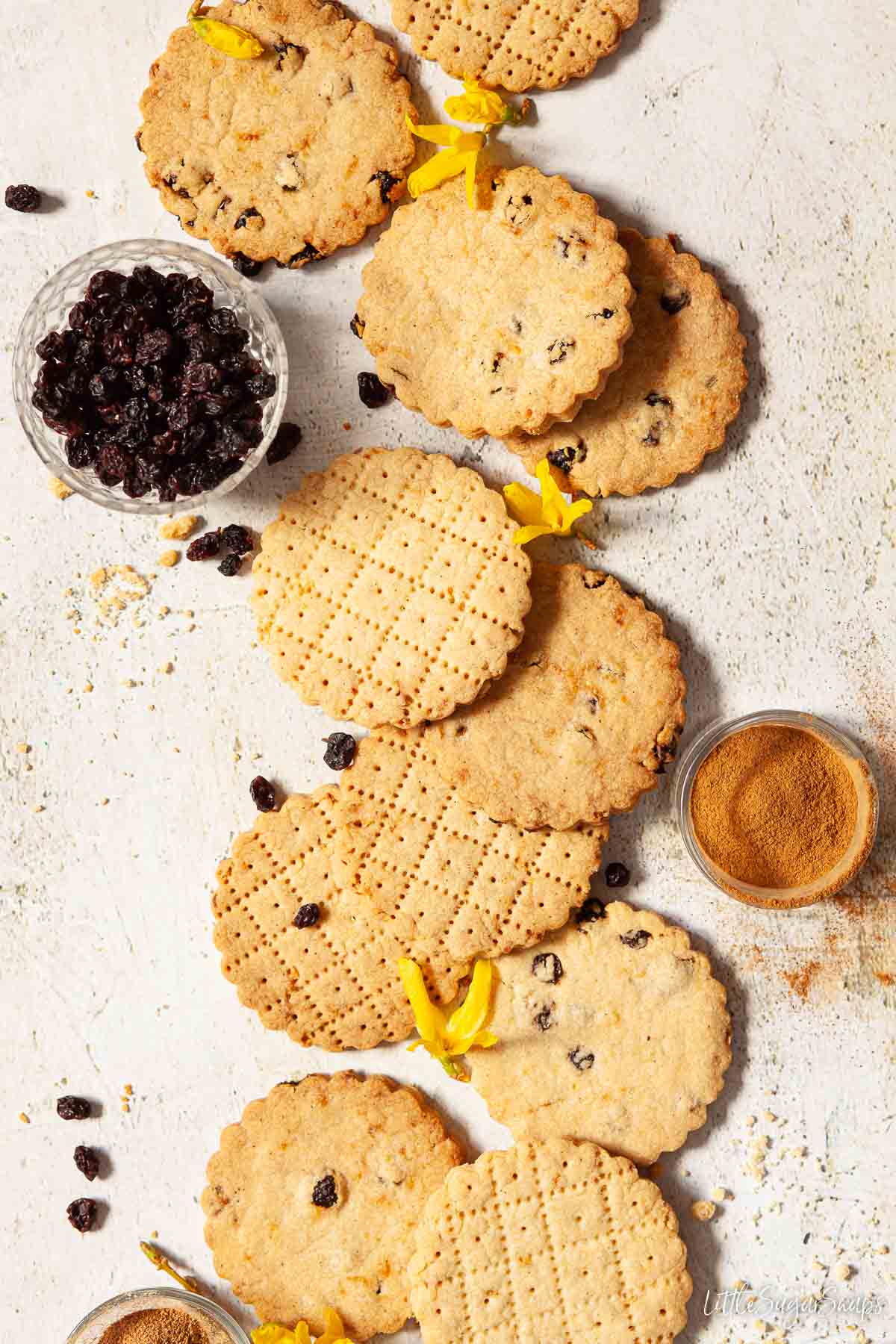
Heritage recipes list butter, sugar, flour, egg, lemon zest, rosewater and a variety of spices as ingredients. Whilst the addition of currants seems a more modern addition.
In days gone by it was common to weave a dainty design onto the top of each biscuit. This was partly to help ensure a good bake but also to help the refined, well-heeled ladies of the time to eat them delicately since the perforations make the biscuits easy to break into bite-sized pieces.
Malvern Pudding (Worcestershire)
Malvern is a lovely spa town in Worcestershire famous for its pure spring water and the Malvern pudding – a namesake recipe featuring cooked apples, creamy custard and a delightfully crunchy sugar topping lightly spiced with cinnamon.
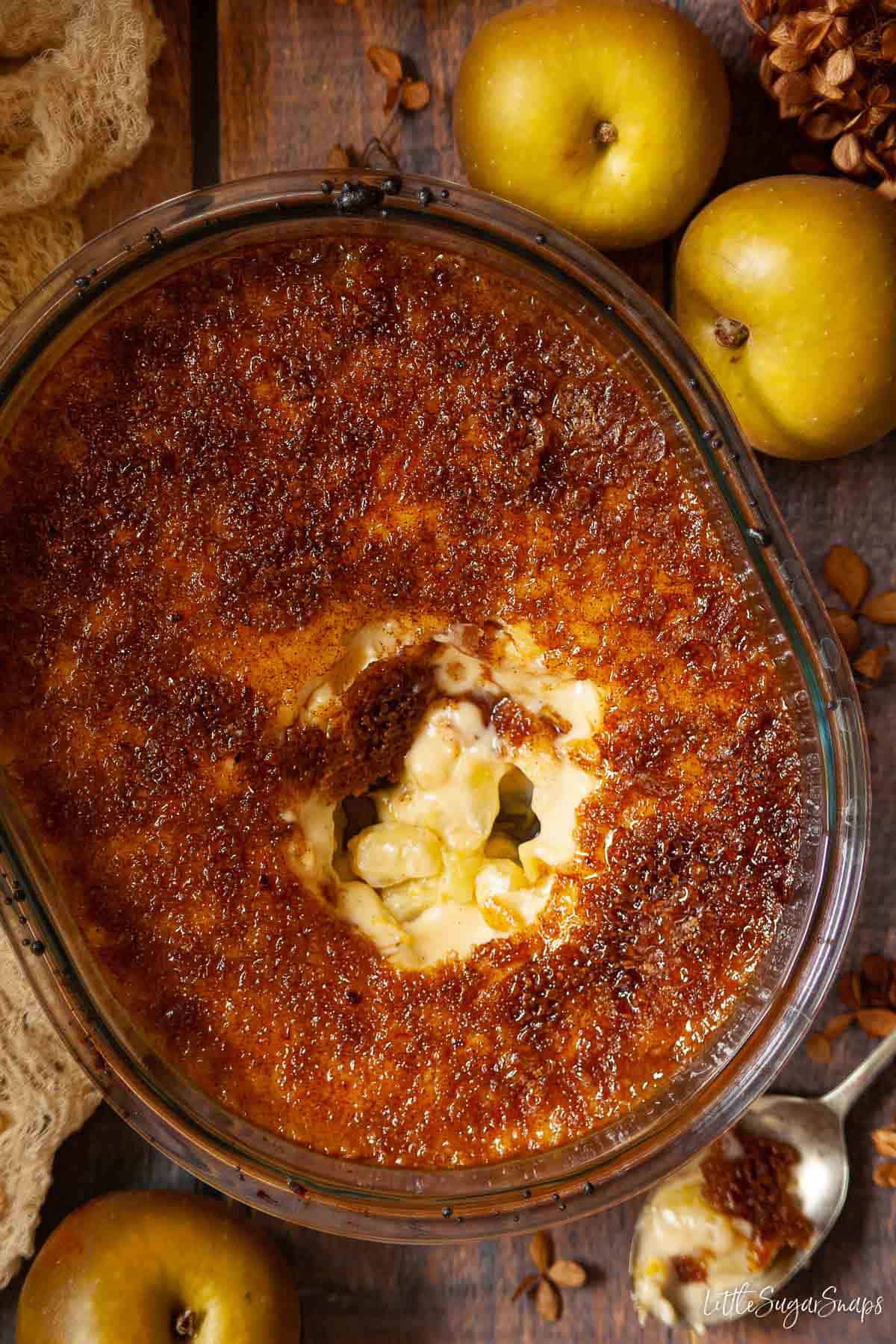
This nostalgic dessert makes fantastic use of the apples that grow abundantly in the county. Malvern pudding has been around for centuries but it has rather fallen out of favour in modern times.
This is a real shame as this dessert has plenty to enchant pudding lovers. Think of it as an English take on crème brûlée. That said, it’s much simpler to prepare.
Get your spoon ready to break into that caramelised sugar topping.
Birmingham Balti (West Midlands)
It’s said that a truly authentic balti curry can only be savoured in the Birmingham balti triangle, where this West Midlands food speciality was first created way back in the 1970s.
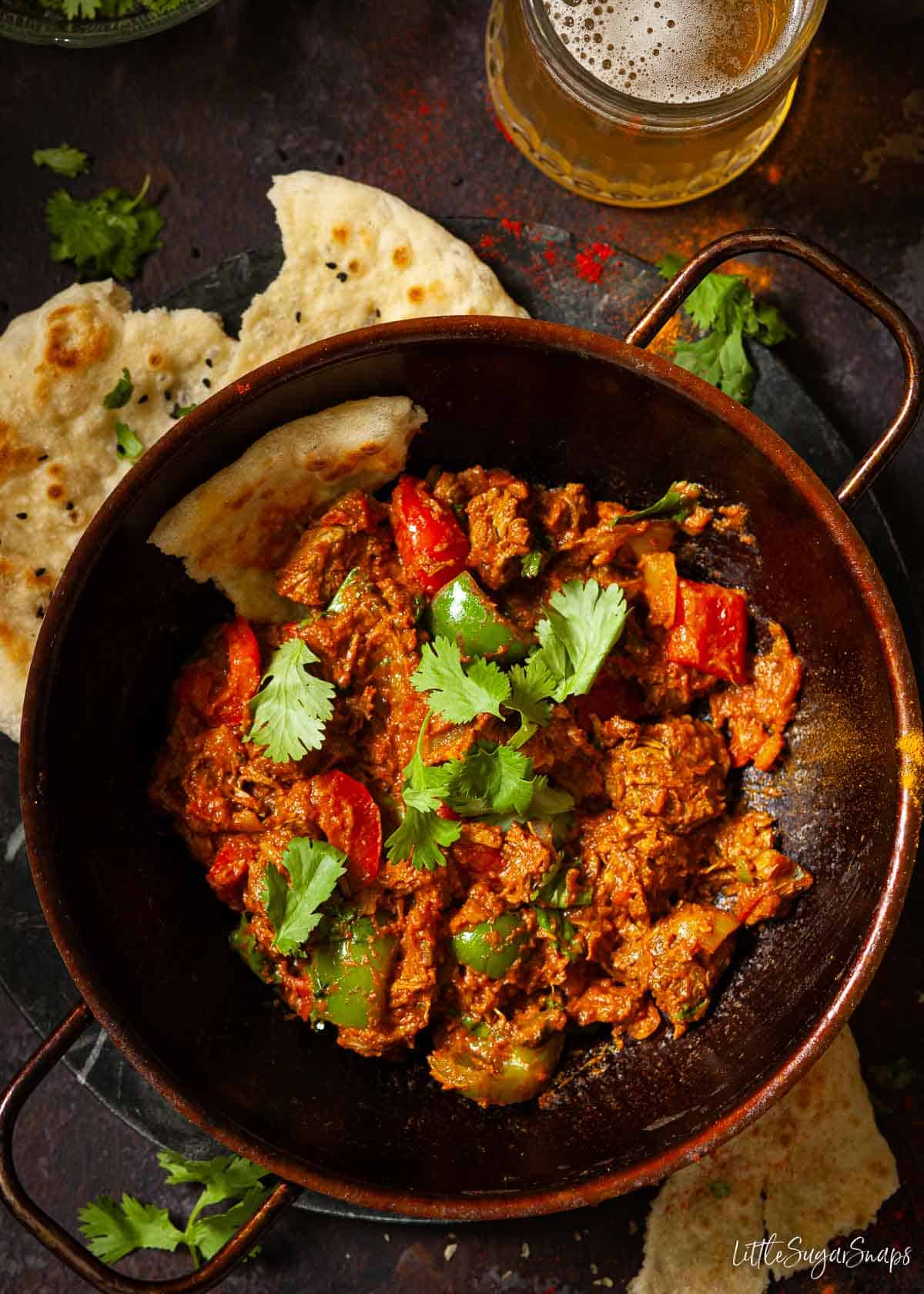
Perhaps so, but there’s nothing wrong with making your own banging balti at home – especially if you don’t happen to live near Birmingham. It may not be a 100% authentic Birmingham balti, but it’s bloomin’ tasty all the same.
This British curry was created by the Pakistani/ Kashmiri community living in Birmingham at the time. They based the recipe on traditional cooking techniques but took into account the tastes of the general public (and no doubt the availability of spices locally) at the time.
It’s best cooked and served in a traditional balti bowl with fresh naan bread to accompany for dipping and scooping. Thank you, Birmingham, for this joyful creation.
Shropshire Soul Cakes
These treats have been knocking around since medieval times. Back in the day children and the poor would go a-souling over the Allhalloweve period (31st October – 2nd November covering Halloween, All Saints Day and All Souls Day). In return for a song and prayers for the souls of deceased loved ones, the soulers would receive a cake. It sounds like a fair deal.
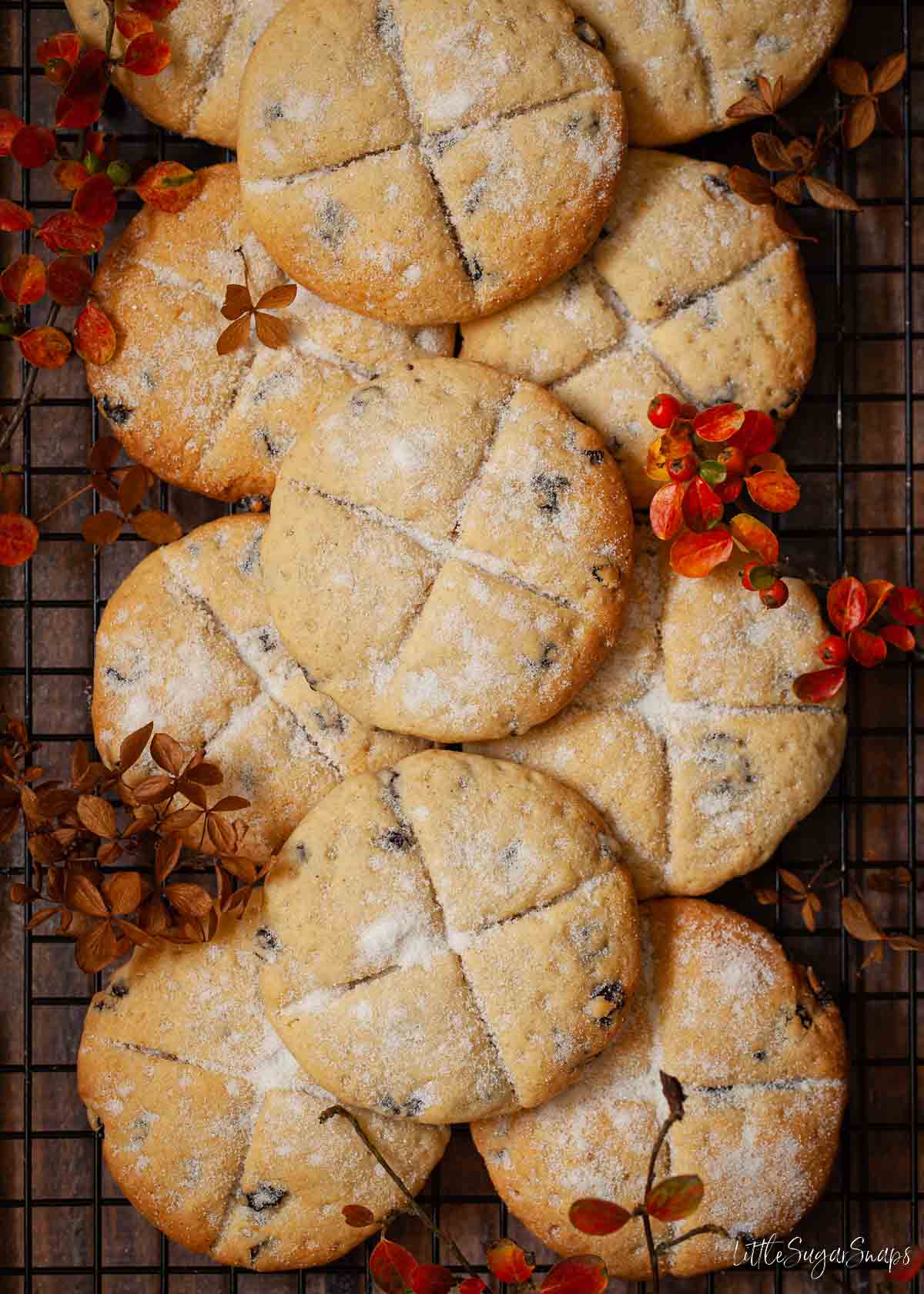
The tradition began to die out across the UK from 1870 onwards when educational reforms meant more children went to school and were not able to go a-souling. However, the age-old tradition was upheld in the county of Shropshire until as recently as the 1950s. I guess this is why soul cakes have become so strongly associated with Shropshire.
What can you expect from a soul cake? They are soft, sweet, delicately spiced and laden with zesty currants. You’ll know a soul cake when you see one because they come with a distinctive cross (the sign of alms) across the top.
And is it worth baking up a round to go with a cup of tea? You bet it is.
Warwickshire Stew
Warwickshire stew is the ultimate comfort food with meltingly tender slow-cooked beef and plenty of chunky vegetables. So, it’s rather surprising that it’s almost unheard of these days. What a shame that is.
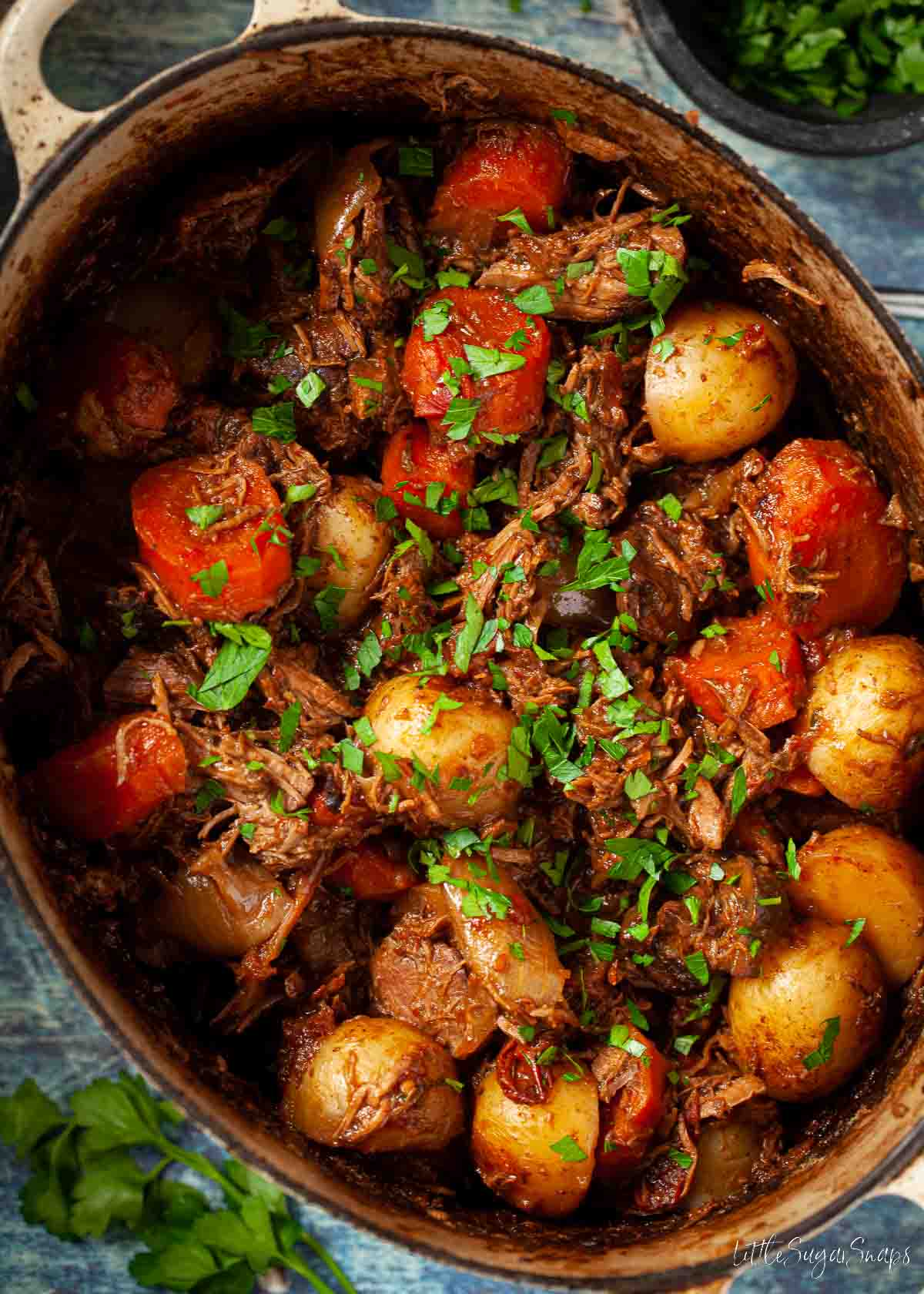
Although I’ve been able to find very little in the way of a backstory for this beef stew, don’t let that put you off making it. This hearty stew is divine and well worth the 5-hour wait for it to cook.
And as it’s a one-pot meal there’s no need to prepare any side dishes. Instead, kick back and get cosy under a blanket whilst you wait for it to cook. Perhaps uncork a bottle of red wine whilst waiting too…
Coventry God Cakes (Warwickshire and West Midlands)
Which county these festive treats belong to really depends on what year you think their geographical classification should go from. You see, once upon a time the city of Coventry resided in Warwickshire. But that changed in 1974 when geographical boundaries were fiddled with. Coventry is now deemed to be part of the West Midlands county.
So where does that leave the Coventry God Cake? Personally, I think we should give credit to Warwickshire as Godcakes have been around for around 800 years when Coventry was definitely part of this county. I’m hoping that you’ll agree with me or be willing to agree amicably to a differing opinion.
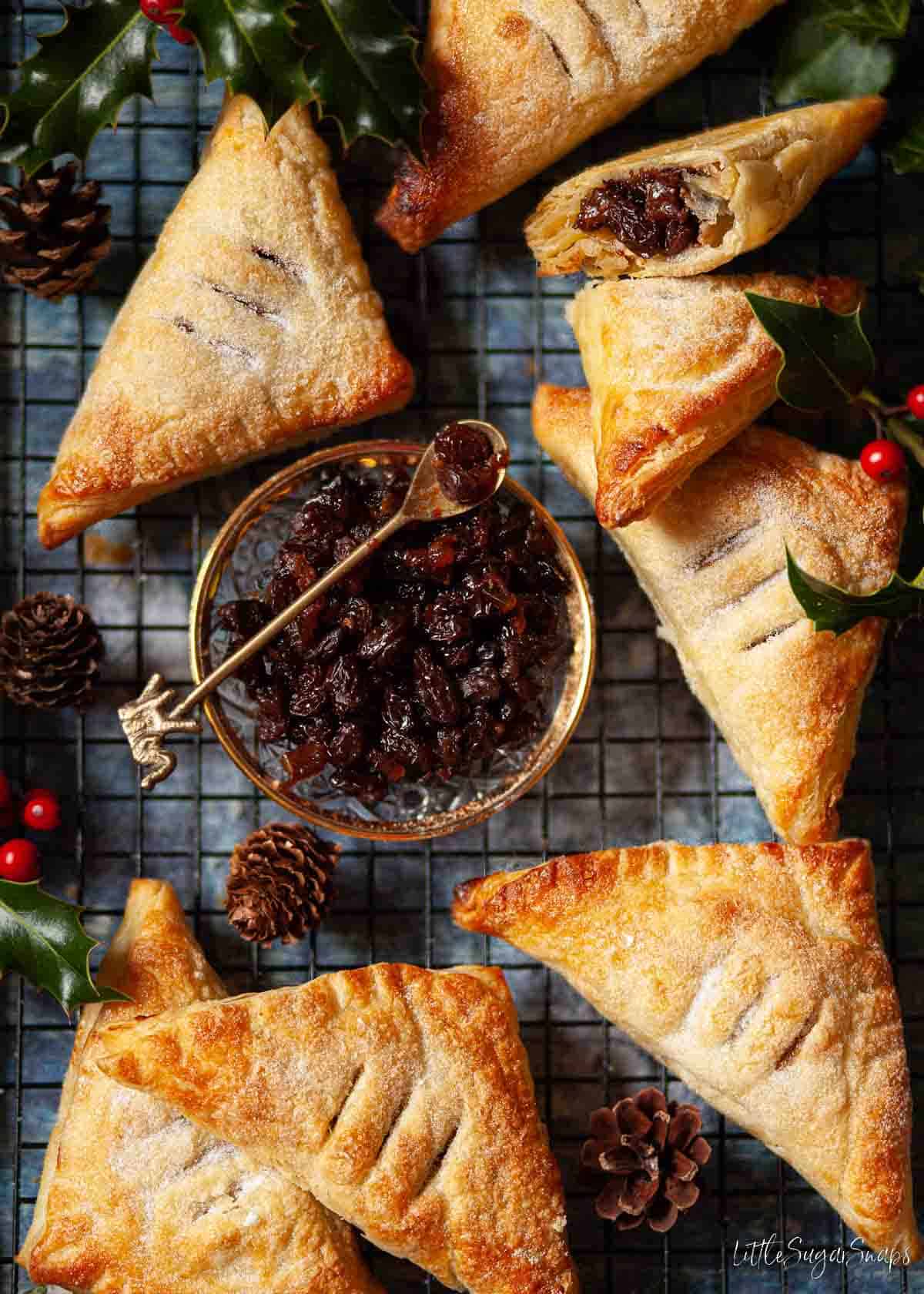
Regardless of county location, these treats definitely do come from the West Midlands region and they are not to be missed. Tradition has it that godparents in the city of Coventry would hand these out to their godchildren at New Year along with a blessing for the year ahead. Essentially, they are a token of good luck.
Expect delicately flaky laminated puff pastry to encase a juicy mincemeat filling. Mouthwatering… Coventry God Cakes should always be triangular in shape (a right-angled isosceles triangle to be precise) and come with three slits across the top. These two features are said to symbolise the Holy Trinity.
But times change and Godcakes are there for the taking for all to enjoy, not just those of a certain faith or residents of Coventry.
Pikelets (West Midlands region)
The modern name of these lovely little griddle breads is hotly contested across the entire of the UK, with many insisting that they are really called crumpets. Regardless of where you sit on this debate, pikelets passed over the Welsh border to the West Midlands in the 17th century, taking on the anglicised version of the Welsh name bara pyglyd as they did so. Exactly where in the West Midlands they first took hold seems to be anybody’s guess.
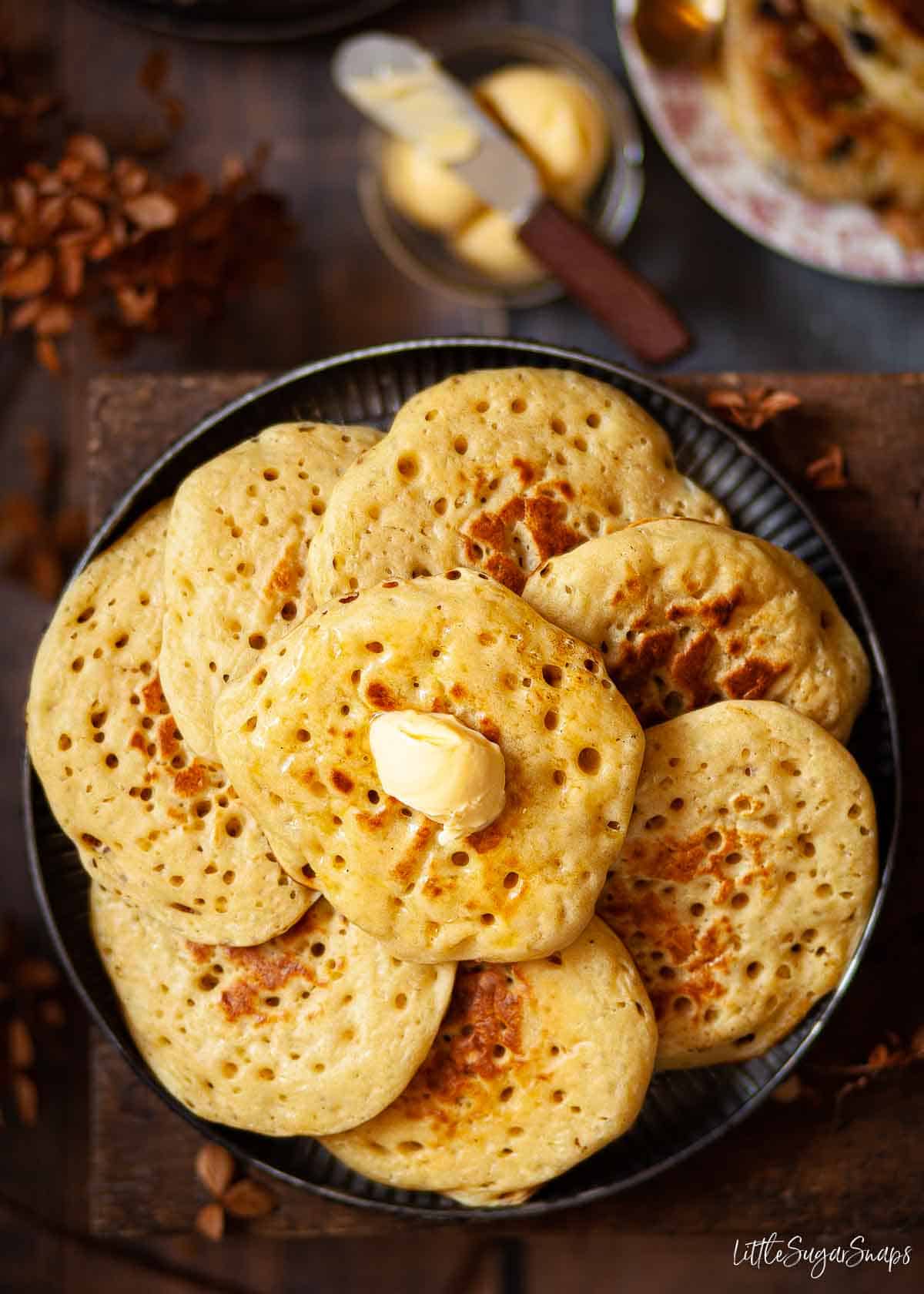
What can you expect from a pikelet? Great texture – they are chewy and vaguely spongy. They also have an intriguing and unique appearance, being characterised by craters formed when air bubbles burst during the cooking phase. Try them topped with butter or jam. Alternatively, add some currants into the mix to make fruit pikelets and douse them liberally in golden syrup. Simply delectable.
Sausage Pie with Bacon, Egg & Apple (Worcestershire)
This smashing pie, featuring pork sausagemeat, bacon, hard-boiled eggs, cooking apple and fresh parsley is a seemingly quite obscure recipe harking way back to yesteryear in Worcestershire.
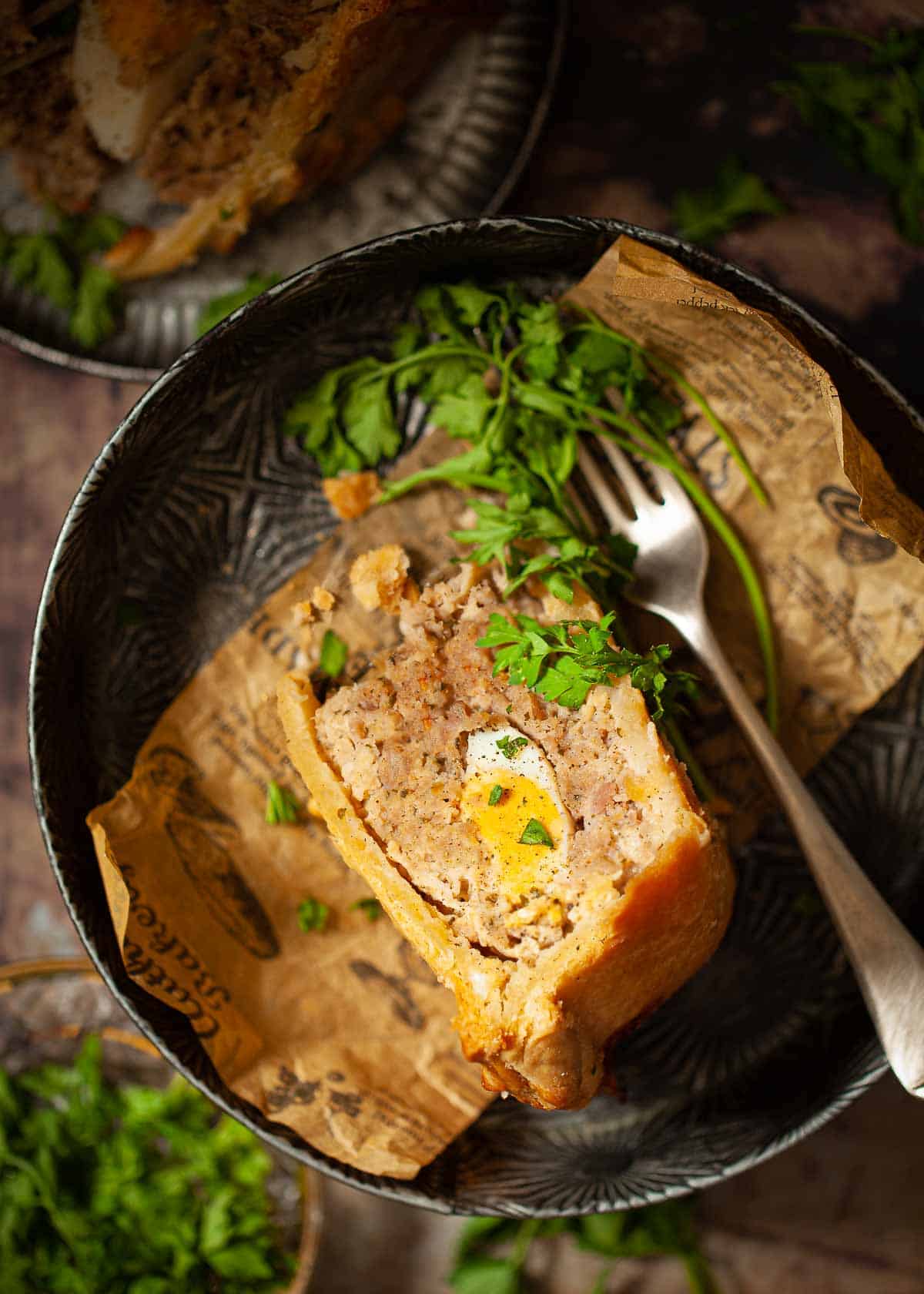
Once upon a time, this pastry gem was known as bits and bobs pie because it was made with leftovers when a pig had been butchered. Luckily, the modern-day recipe is much more enticing.
If you’re hesitating because of the apple, then don’t! I made that mistake for a while. This pie is savoury – the apple does not dominate at all, nor does it make the pie particularly sweet. But it does create a succulent and exceedingly tasty pie filling to accompany that crisp shortcrust pastry shell.
Trentham Tart (Staffordshire)
It’s hard not to fall in love with Trentham tart at first sight. The decoration on top is fun, bold and eye-catching. Expect a crisp shortcrust pastry shell, a generous layer of sticky raspberry jam, soft vanilla-infused sponge and the crowning glory: glacé icing, glacé cherries and walnut halves. Don’t even think about deviating from this presentation – if you do, it is no longer Trentham tart.

The origin of this tart is disputed. Some claim it was a happy accident in the kitchens of Trentham Hall when a scullery maid forgot that she was making Bakewell tart and accidentally topped the jam layer with sponge cake batter instead of almond frangipane. Others claim that it was the invention of a local confectioner, Mr Cornwell.
I don’t like to get too hung up on such details, especially when tasty tart is up for grabs. I suggest you don’t either, just enjoy the recipe.
Grey Peas and Bacon (The Black Country)
I think of grey peas and bacon as the West Midlands’ answer to mushy peas and parched peas. However, the yesteryear locals were not content to create a dish that was one-dimensional in taste or texture that relied on liberal seasoning & vinegar to make it shine. Instead, the folk of the Black Country decided to elevate this dish by adding in a whopping stash of bacon. They also couldn’t resist dropping generous amounts of onion and pearl barley into the pot. The result? A dish loaded with interest and flavour. Be warned – it’s filling.
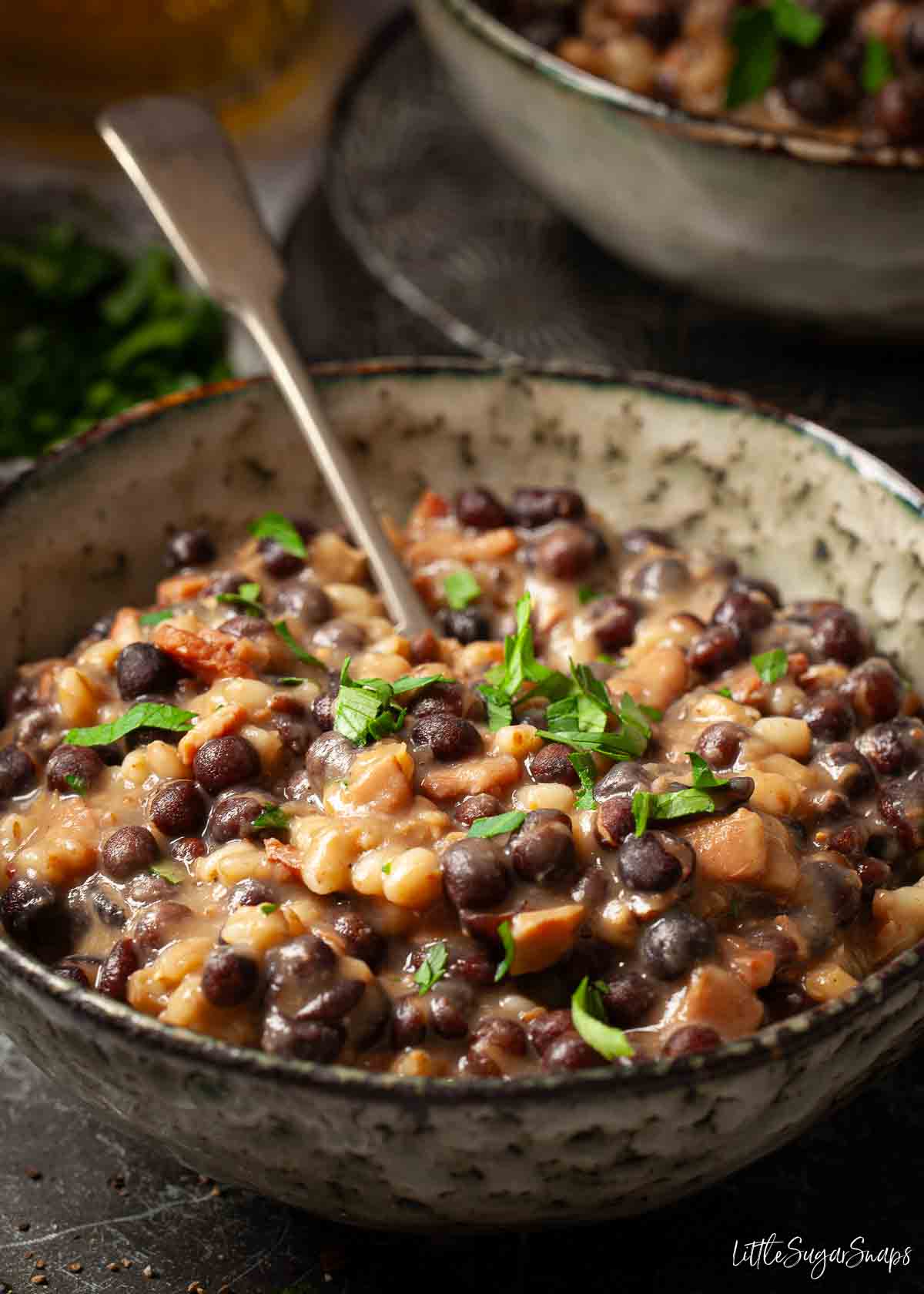
Locals might also call these grey peys or grey paes. They can be served as a main with crusty bread alongside or as a side dish. Historically, this delicacy was particularly popular on Bonfire Night and Ash Wednesday but it has fallen out of favour in recent years.
Now, rather like mushy peas, baked beans, blue cheese & marmite, grey peas and bacon won’t be to everybody’s taste. It might well be a love-hate thing with little margin in between. I say give them a try.
Food products originating from the Midlands
There is an abundance of food products either originating from or still made in the East and West Midlands. The following goodies were all originally made within the Midlands. Whilst the associated recipes listed are not regional they do incorporate some of these Midlands food products.
Worcestershire Sauce (West Midlands)
This condiment was created by two pharmacists (Lea and Perrin) in the city of Worcester in 1837. Its popularity has stood the test of time and, if anything, favour for Worcestershire sauce has increased as tastes have broadened extensively over the many decades since it was first produced.
Lea and Perrins Worcestershire sauce is now exported to over 130 countries, but it’s still made in Worcester. Add a splash to any number of food and drink recipes for an instant boost to the flavour. Here are a few recipe ideas:
Stilton Cheese (East Midlands)
1n 1996 Stilton cheese acquired the European Protected Designation of Origin (PDO) status. This means that it can only be made in certain places (Nottinghamshire, Leicestershire and Derbyshire) and it must be made to a traditional recipe.
These East Midlands counties are excessively proud of Stilton cheese. Aside from gracing cheeseboards, both White Stilton and Blue Stilton can be used to great effect in many recipes. I highly recommend Blue Stilton dumplings on top of a comforting beef stew.
Bramley Apples (East Midlands)
Bramley apples stem from Southwell, in Nottinghamshire. Again, a stone’s throw from my childhood home (which came complete with a Bramley apple tree).
We have a young girl called Mary Ann Brailsford to thank for her contribution to the Midlands food world. In 1809 she planted pips in her cottage garden in Southwell which eventually grew into a fine tree. Years later, a local butcher asked the subsequent cottage owner, Matthew Bramley, if he could take cuttings from the tree and start to sell the apples. The answer was yes, provided that the apples bore his name. The rest, as the saying goes, is history.
Bramley apples are fantastic cooking apples. They can be baked, tumbled into pies and crumbles, made into chutneys or used to make the apple sauce to accompany roast pork.
Cadbury’s Chocolate (West Midlands)
What can I say? Cadbury’s chocolate needs no introduction. It’s world-famous and ex-pats frequently beg family and friends to load a suitcase up with it when they visit. This West Midlands food product is clearly highly prized.
Cadbury’s started life as a grocer’s shop, established in Birmingham in 1824 by John Cadbury. Amongst other things he sold cocoa and drinking chocolate. By 1831 the business expanded to produce commercially and by 1847 the first chocolate bars were being made, although Dairy Milk wasn’t launched until 1905.
Production moved to Bournville in 1878 and this site, just south of Birmingham city centre, still remains at the heart of the UK chocolate manufacturing industry today.
For me, Cadbury’s chocolate doesn’t just mean Dairy Milk. It’s all those treats such as Chocolate Buttons, Cadbury’s Creme Eggs, Roses and Milk Tray that were household names I grew up with. Plus of course, Cadbury’s Drinking Chocolate – my daily hot drink of choice before I also fell in love with tea.
Feast your eyes on a few of my recipes featuring Cadbury’s goodies.
Bournville Cocoa and Chocolate (West Midlands)
Bournville cocoa was launched in 1906 with Bournville dark chocolate following shortly after in 1908. Both were initially produced at the Cadbury’s Bournville factory, so have their roots firming planted in West Midlands soil, regardless of where they are now manufactured.
Bournville cocoa has always been my go-to ingredient whenever I’m looking to add a deep and rich chocolate flavour to bakes. Take a look at this product in action:
Bird’s Custard
Bird’s custard powder was invented by Alfred Bird in his chemist shop in Birmingham in 1837. The reason? His wife was allergic to eggs which are the key component in thickening homemade custard.
Production has now moved out of the West Midlands, but I think we can agree that Mr Bird revolutionised the custard making process for cooks across the nation permanently.
Although I sometimes do make my custard from scratch I’m not ashamed to admit that 9 times out of ten I’ll use my tin of Mr Birds magic powder. It’s just so quick and convenient. I also adore using it as an ingredient in my baking. Here are a few recipes making excellent use of this product.
HP Sauce (East Midlands)
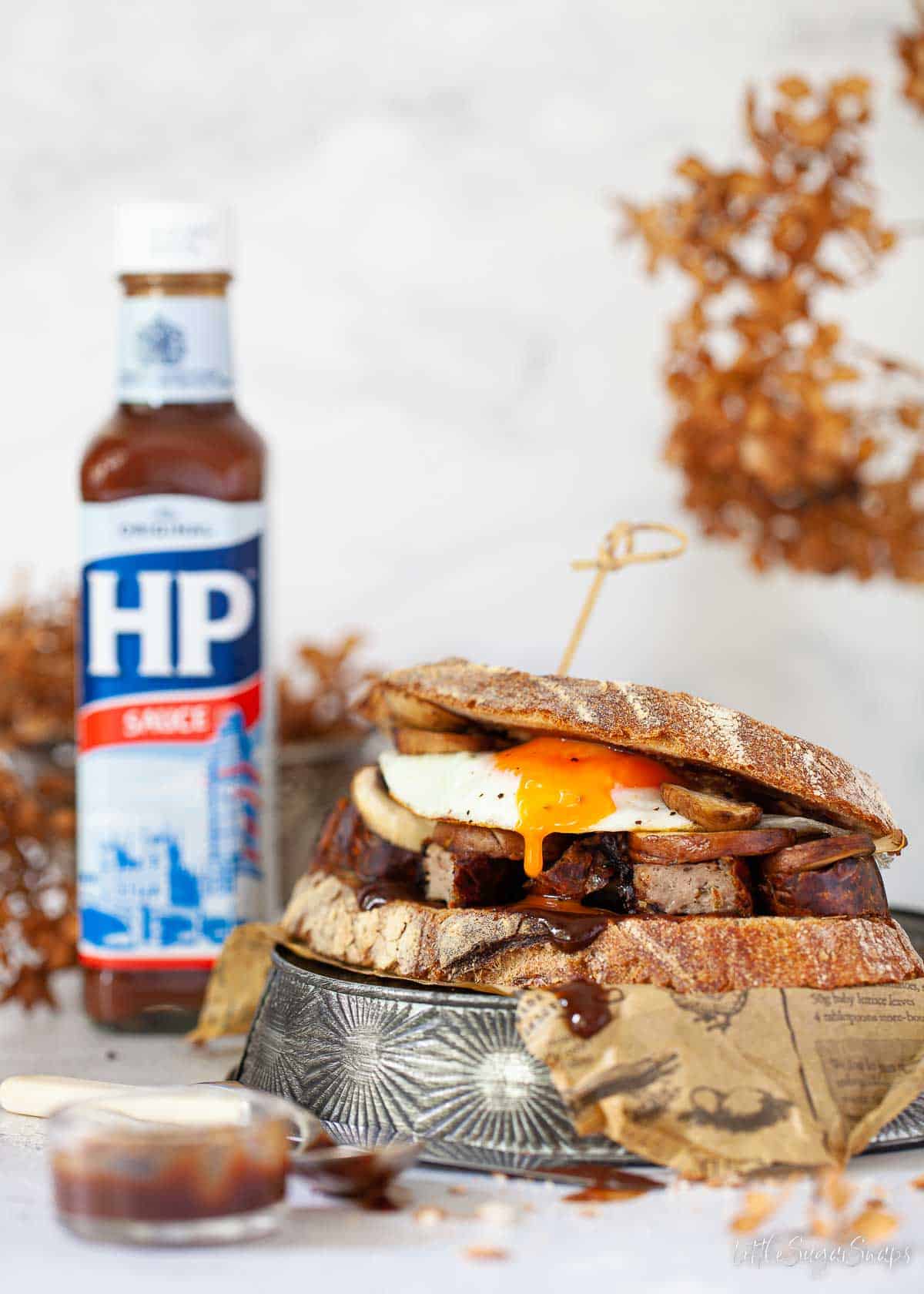
HP Sauce is a savoury brown sauce made from tomatoes, tamarind, vinegar and spices. Frederick Garton, a grocer in Milton Street, Nottingham, came up with the original recipe and set about producing it. As popularity grew, so did a rumour that the sauce had become a favoured condiment served in the Houses of Parliament. On that basis, the name HP Sauce was adopted in 1895 and that is why the Houses of Parliament appear on each and every bottle of HP Sauce.
Alas, when Mr Garton ran into financial difficulties a few years later, he unwittingly sold the recipe and production rights to Edwin Samson Moore. He took production over to Birmingham, made a small fortune and turned HP Sauce into a well-known household brand for generations to come.
HP Sauce is hugely popular dolloped alongside the British fry-up or on a sausage sarnie. But the ways this condiment can be used are limitless. Try adding it on top of cheese on toast, dip a pasty into a pot or splash a little into soups, casseroles, chilli or spaghetti bolognese. Wherever a dash of tangy sweet and sour flavour might work, reach for the bottle.
Ready-to-Eat Products from The Midlands
Aside from the vast array of local ingredients that are produced in the Midlands, there are also some famous products ready for immediate consumption. Here are a few.
Walker’s crisps (Leicestershire)
What’s your favourite flavour? I think these need no introduction to anybody living in the UK. They have been the leading crisp producer for decades and their longstanding advertising partnership with Leicestershire-born footballer Gary Lineker has kept them fun, quirky and able to stand the test of time as premium brands have entered the marketplace.
Do you like to stuff a few into a crisp butty? Not tried that yet? Grab some white bread or a soft cob (that’s a bread roll to non-Midlanders), spread liberally with proper butter and fill with plenty of walkers crisps (preferably salt and vinegar). Squash down slightly and tuck in… happy sighs.
Melton Mowbray pork pies (Leicestershire)
Popular on savoury buffets, stuffed into lunchboxes or bolstering a good ploughman’s platter, an authentic Melton Mowbray Pork Pie must be made within a specific geographical area around Melton Mowbray in Leicestershire.
These pies have a high meat content compared to pork pies made elsewhere in the country. They contain no artificial colours, flavours or preservatives and only include uncured pork, giving the meat a natural colour likened to that of roast pork once the pies are cooked. Inauthentic pork pies include cured pork, rendering the cooked meat pink.
Melton Mowbray pork pies are always baked without a supporting hoop or tin, causing the pie to settle during baking. It’s this that gives the pie it’s trademark rounded, slightly bow-walled shape. If you see a pie with a straight side it will have been baked in a tin or hoop so you can be certain that it is not an authentic Melton Mowbray pork pie.
The crowning glory of the pie is the natural bone stock jelly that is poured into the pie after baking. The jelly serves to enhance the flavour of the meat and ensure a moist, yet firm texture when eaten.

